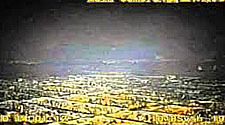
Efforts to deal with the aftermath of the Fukushima accident have been relatively rarely reported outside of Japan in the last few years, but a recent video emphasises the scale of the problem. The footage was filmed by the first robot to enter the Primary Containment Vessel. Although not in the immediate vicinity of the (presumed to be melted) nuclear fuel, the radiation doses are extremely high. The BBC report incorrectly suggests it would be fatal “in a few seconds” – a few tens of minutes is more accurate. Nevertheless the amount of radiation is very considerable – the interference in the video is a result of high levels of radiation hitting the camera.
Decommissioning the reactors will be an immense challenge due to the radiation levels and the damage to the containment vessels. The current plan is to remove the fuel in ten years or so, and complete their decommissioning in 30 – 40 years. The key decision on how to retrieve the fuel is planned to be taken in 3 years’ time.
As reported in Japan News, retrieving the fuel under water is preferable because water is a very good radiation shield. The approach is therefore likely to depend on whether the Primary Containment can be made watertight (which is why inspecting the area with robots is essential). Such an approach may also depend on the efforts to control groundwater flows through the basements of the reactor buildings. These have encountered problems, as plans to control groundwater by freezing the ground failed in 2014.